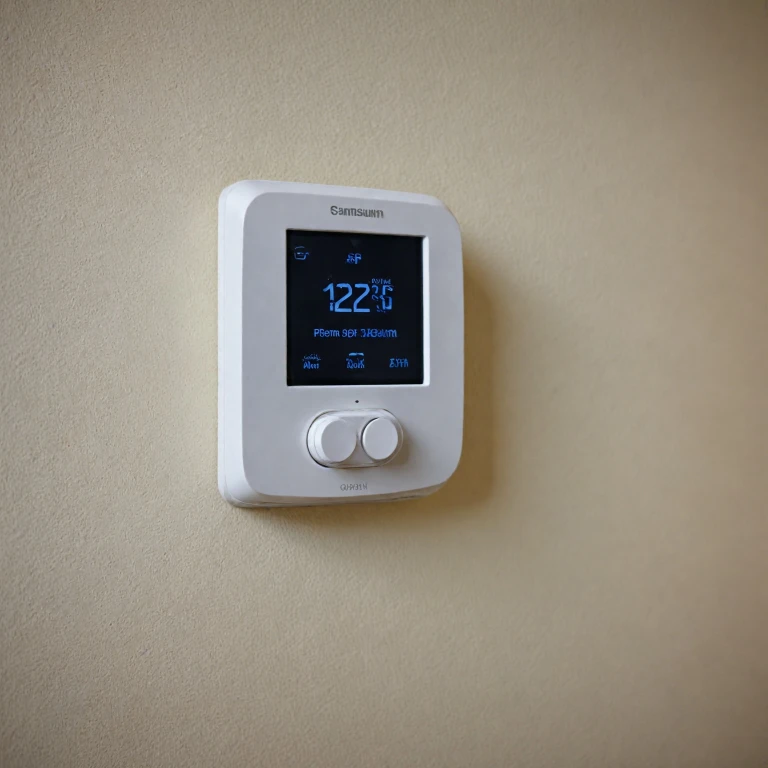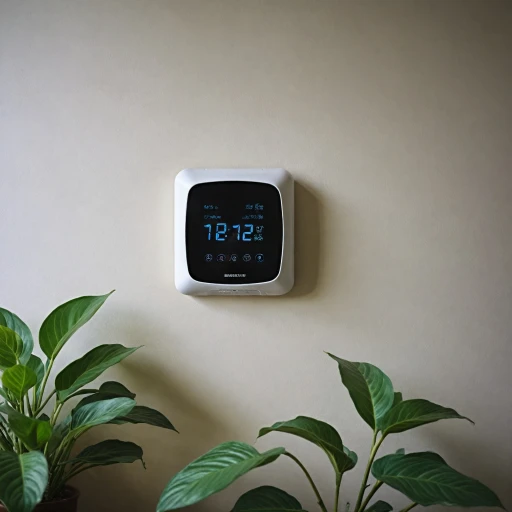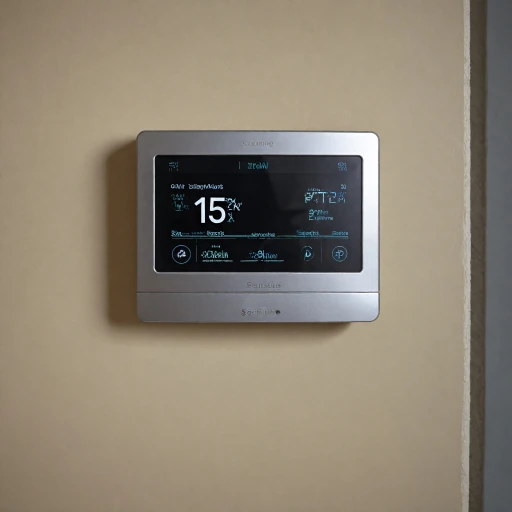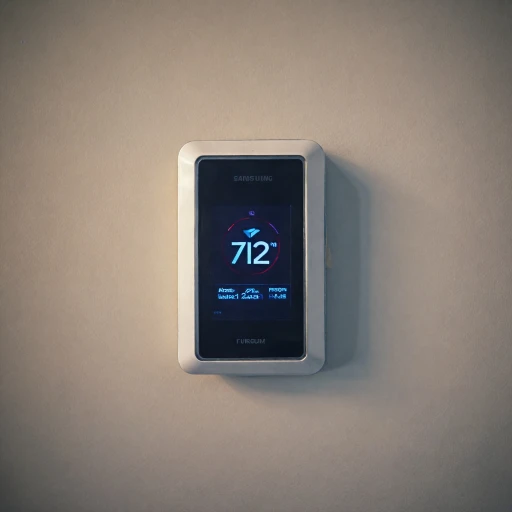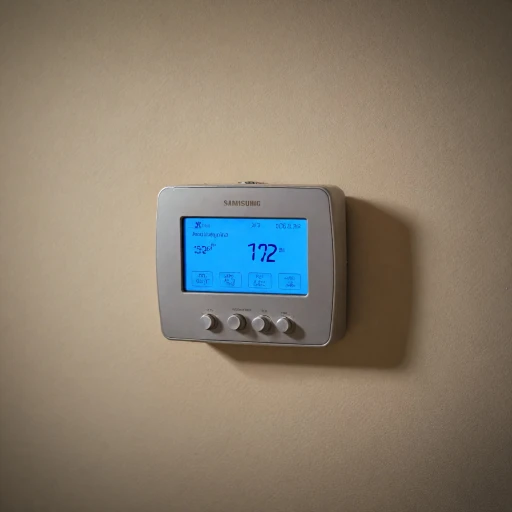What is a Line Voltage Thermostat?
Understanding the Role of Line Voltage Thermostats
Line voltage thermostats play a crucial role in controlling electrical heating systems, often used with electric heaters and electric baseboards. Unlike their low voltage counterparts, these thermostats are designed to manage direct electrical flow, making them ideal for electric heating applications, such as single or double pole heaters. This distinction is essential for anyone exploring heating options in their home; the choice between line and low voltage thermostats can impact energy efficiency and operational control.
Among the many options available, line voltage thermostats can be programmable, providing flexibility and enhanced temperature regulation. This feature allows homeowners to set specific heating schedules, contributing to energy savings and comfort. Brands like Honeywell and King Electric offer a variety of line voltage products, each with unique features to suit different heating needs.
When considering line voltage thermostats, it's vital to understand how they connect to your heating system. These thermostats control the power directly from the electric line, warranted for higher voltage capacities. This makes them a robust choice for high-demand heating environments, facilitating efficient heat distribution throughout your space.
Additionally, those interested in exploring more about thermostat settings and configurations may find resources, such as a comprehensive user guide, useful for optimizing their thermostat's performance. Understanding these fundamentals can help in selecting the right line voltage thermostat product for your specific heating requirements, ensuring a comfortable and well-regulated environment.
Advantages of Using Line Voltage Thermostats
Exploring the Advantages of High Voltage Thermostats
When considering a line voltage thermostat, it's essential to understand the numerous benefits these devices offer. Primarily designed for electric heating systems, line voltage thermostats are efficient controllers for managing heat output, making them an ideal choice for homes equipped with baseboard heaters, radiant ceiling heaters, or any other type of electric heating. One significant advantage of using a line voltage thermostat is its ability to handle higher electrical loads. These thermostats are specifically built to manage high wattage heaters, ensuring efficient thermal regulation in your space. Line voltage thermostats can manage single-pole or double-pole wiring setups, granting flexibility for varying installation needs. Additionally, the integration of programmable features in many models, like the Aube programmable thermostat, allows for personalized heating schedules. This not only enhances comfort but can also lead to noticeable energy savings. By programming your thermostat to align with your lifestyle – reducing heat when not needed and increasing it before you return home – you optimize energy consumption, potentially lowering your electricity bills. For tech enthusiasts and those seeking modern solutions, some line voltage thermostats offer smart technology. This means they can connect to wireless networks, allowing users to control them remotely via smartphones or home automation systems. Such connectivity is beneficial for those who desire control over their heating even when away from home. Moreover, the durability and robustness of these products add to their reliability, ensuring that your electric heating systems are managed safely and efficiently. Whether you opt for a classic model or explore options like the Honeywell Aube thermostats, the reliability remains a consistent feature. With numerous options available on the market, choosing the correct thermostat may seem overwhelming. However, understanding your specific heating needs and considering the various smart features and programmable options can help guide your decision toward the best line voltage thermostat for your home.Installation and Compatibility Considerations
Key Considerations for Installing Line Voltage Thermostats
When it comes to installing line voltage thermostats, there are crucial factors to assess to ensure they function efficiently and safely. These thermostats are designed for high voltage systems, typically around 120 or 240 volts, which makes them suitable for electric heating systems such as radiant floor heaters, baseboard heaters, and certain wall heaters. Here's what you should consider before getting started:
- Compatibility: Ensure that your current heating system supports line voltage thermostats. Lines and circuits need to match the thermostat's amperage rating—verify this to avoid any mismatched connections that might lead to dysfunction or hazards.
- Wiring and Circuit Type: Line voltage thermostats are generally categorized into single pole or double pole. Single pole thermostats have a "low" setting but can't completely turn off the heater, while double pole thermostats offer a true off position. Deciding between these depends on your preference for control settings.
- Assessing Electrical Loads: Make sure the electrical load or the total amps drawn by the connected heaters does not exceed the thermostat’s rating. Products like Honeywell Aube programmable thermostats and King Electric models are popular options within this category.
Newer models of line voltage thermostats come with smart features that can enhance efficiency in a home heating configuration, offering capabilities for advanced programmability and remote control via connected smart devices.
Smart Features in Modern Line Voltage Thermostats
Smart Innovations in Today's Line Voltage Thermostats
In recent years, line voltage thermostats have embraced cutting-edge technology that offers users more than just the basic control of their heating systems. Modern line voltage thermostats now come equipped with smart features that provide enhanced comfort and energy efficiency. A hallmark of these advanced thermostats is programmability. Many products offer features like day programmable settings, allowing homeowners to tailor the thermostat line according to their daily schedule. This means you can program your electric heating to match your routine, thereby optimizing usage and lowering energy costs. In addition to programmability, high voltage thermostats now often have integrated connectivity. This allows them to sync with smart home systems, enabling remote operation from your smartphone or tablet. Such functionalities not only add convenience but also boost the thermostat's efficiency by giving you control even when you're not physically present. Some brands, like Honeywell Aube and King Electric, have taken it a step further by incorporating intuitive interfaces. These interfaces offer easy navigation and configuration options that enhance user experience. With features like customizable displays and straightforward setup procedures, these voltage thermostats provide a smooth and user-friendly interaction. Moreover, the blending of single pole and double pole designs offers versatility in controlling electric heaters, making these thermostats highly adaptable. Whether you require a thermostat for a single or multiple heater unit setup, there’s a fitting option in the market. It’s worth examining these modern options if you're considering a switch from low voltage thermostats, given the advancements in line voltage technology. Using a programmable thermostat not only adds a layer of convenience but also contributes to a smarter, more efficient home heating solution.Comparing Line Voltage and Low Voltage Thermostats
Evaluating Between Line Voltage and Low Voltage Thermostats
When it comes to choosing the thermostat that best suits your needs, understanding the differences between line voltage and low voltage thermostats is crucial. Both types have specific scenarios where they excel, making them more suitable depending on the heating system and environment in question. Line voltage thermostats, commonly used in electric heating systems, operate on higher voltage levels, typically 120V or 240V. Their functionality aligns well with radiant, convection, and fan-forced heaters. For instance, a line voltage thermostat might be the perfect fit for baseboard heaters or a king electric wall unit. They are available in single pole and double pole variations, offering options for different safety preferences. In contrast, low voltage thermostats generally control central heating systems that include furnaces or heat pumps. Operating at around 24 volts, these thermostats are compatible with a broader range of environments and heating setups. They are ideal for integration with systems that support both heating and air conditioning control. Programmable thermostat options exist within both categories, allowing users to save energy by customizing heating schedules. However, the flexibility and digital prowess found in modern line voltage thermostats, like those from Honeywell Aube or other product lines, means homeowners can enjoy advanced programmable features even with electric heating. Another consideration is the ease of installation. Low voltage thermostats typically require a more intricate setup, often involving a connection to a centralized source. On the other hand, line voltage thermostats might be simpler to install, especially for single-room applications. Ultimately, when deciding which thermostat to add to your cart, consider your home's current heating system, your electrical setup, and any specific features that would enhance your home's comfort and energy efficiency. By evaluating these elements, you can ensure that the selected thermostat will adequately meet your heating needs.Choosing the Right Line Voltage Thermostat for Your Home
Factors to Consider When Selecting the Ideal High Voltage Thermostat
When trying to choose the most suitable line voltage thermostat for your home, there are a few key elements that you should take into account:- Compatibility with Your Heating System: It's crucial to ensure that the selected thermostat matches with your heating system. Whether it’s for electric heaters, wall-mounted heaters, or baseboards, compatibility is key. Check whether you require a single pole or double pole thermostat, as well as if the product supports your heater's amp and volt requirements.
- Programmability and Smart Features: Modern thermostats come equipped with programmable options, such as day programmable features, allowing you to set temperatures for different times of the day. Products like Honeywell Aube and the king electric thermostat line offer advanced programmable capabilities, enhancing efficiency and comfort.
- User-Friendly Installation: Understanding the ease or complexity of installation is also essential. While some might be ready to handle a simple installation, others may require professional help, especially for more advanced programmable or smart thermostats.
- Voltage and Compatibility with Existing Wiring: A line voltage thermostat is suited for systems that operate with higher voltages, unlike low voltage thermostats, which are typically used for central HVAC systems. Make sure all electric wiring considerations align with your chosen thermostat type.
- Reliable Brand Options: Reliable brands like Honeywell and Aube are known for producing efficient and sturdy line voltage thermostats. Investigating brands with proven reviews can add to the dependability of your purchase and ensure long-term satisfaction.
